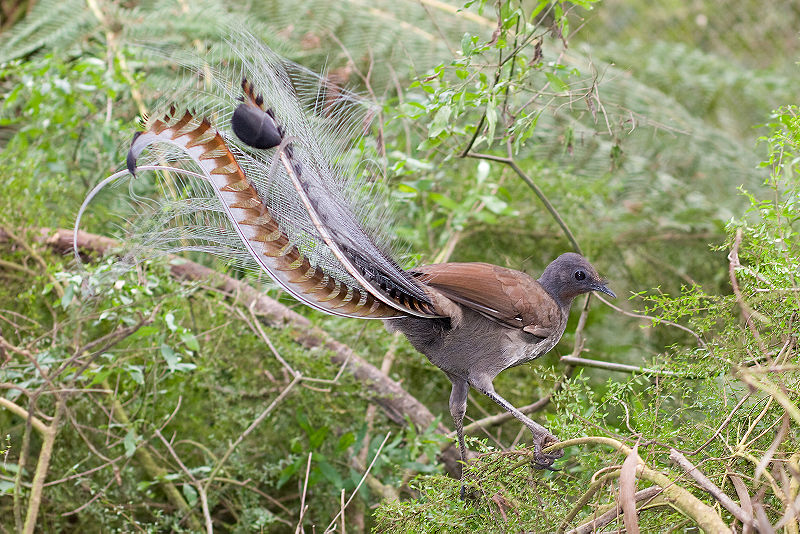
A Superb lyrebird (Menura novaehollandiae). Image: Fir0002
If you think science only happens in the lab, you’d be wrong. And if you think if it can only be done by qualified professional scientists well, you’d be wrong there too.
You too can help contribute to science, all day, every day. And what better time to start than during National Science Week?
Contributions to scientific investigations from the general public are becoming more and more important. Especially when it comes to data collection from the natural world. There are still thousands of species of flora and fauna that have not been identified and even those we do know about need more data so we can learn more about them.
Putting it on the map
The Atlas of Living Australia (ALA) provides free, online access to information about Australia’s amazing biodiversity. It is collaborative, open infrastructure pulls together biodiversity data from multiple sources, and makes it accessible and reusable. For the ALA, citizen science is a very important source of data. The insights gained can be as valuable as those from our scientists.
Start recording the organisms in your own area and on your travels, and join thousands of other people in building Australia’s biodiversity knowledge. And if you’re the competitive type, get yourself on the Citizen Science Leader Board by recording as many different species as you can.
How to get involved
There are several ways for you to participate in citizen science:
- Add your sightings of plants or animals directly into the Atlas of Living Australia
- Contribute your sightings to one of the many citizen science projects currently happening in different areas of Australia. These range from species specific projects (eg. Koala counts, frogwatch, etc.) to regional or national multi-species themed projects (eg. FeralScan, ACT and Southern Tablelands Weedspotter, Waterwatch, etc.), or regional atlases (eg. the Atlas of Life in the Coastal Wilderness).
- Find as many interesting animals, plants and other living things as you can during National Science Week with the QuestaGame Great Australian Biodiversity Challenge.
- If you have skills in identifying organisms, why not join BowerBird and help other people identify their sightings.
- Join the fun and interesting projects in DigiVol which are using crowdsourcing to digitise all sorts of resources into data which can be searched and analysed to improve our knowledge of biodiversity and the natural world.
- Get involved in the Australian Citizen Science Association or a group which is already running citizen science projects, such as one of the ALA affiliates.
So what are you waiting for? Get out there and start finding!
Want to get involved?
The Atlas of Living Australia is a collaborative, national project that aggregates biodiversity data from multiple sources and makes it freely available and usable online.


28th August 2017 at 1:56 pm
Questachallenge is fun, although I think the challenge in the article finished on the 20th. Anyone with a technical background or strong interest in plants and animals would rule at this game. Even with my basic knowledge of Australian wildlife I managed to make it into the top 25 over the weekend.
24th August 2017 at 3:54 pm
Hi Dennis
There are native apps available for:
– iOS – https://itunes.apple.com/au/app/ozatlas/id509021205?mt=8
– Android – https://play.google.com/store/apps/details?id=au.org.ala.mobile.ozatlas
23rd August 2017 at 11:39 am
Hi Dennis, can you clarify? Which URL/s above didn’t work well for you via phone?
15th August 2017 at 10:16 pm
Great idea I’m going to do it
15th August 2017 at 3:24 pm
No phone version?